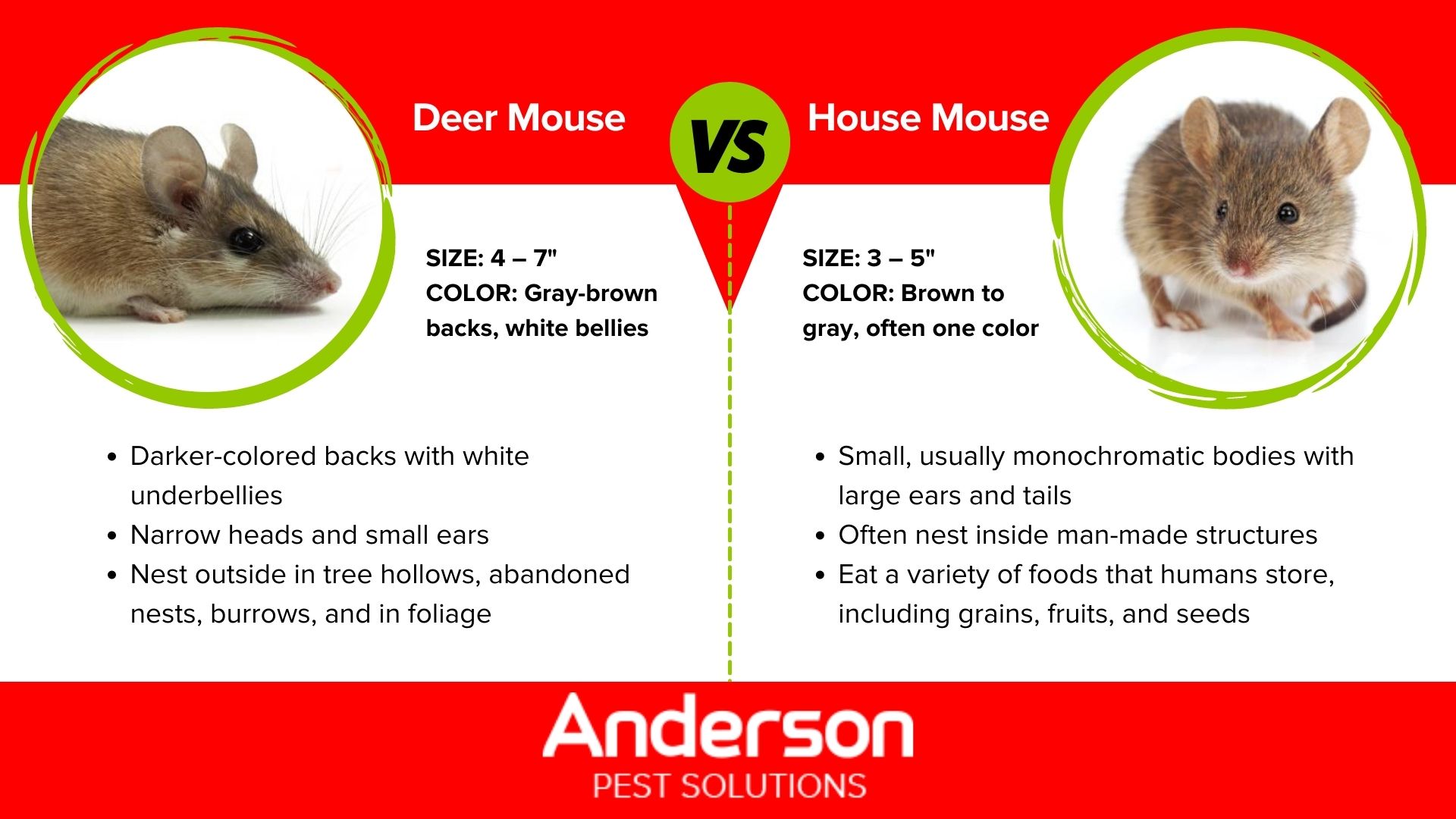Table Of Content

The male defends the nest and raises the young to increase the chances of survival. Like most mice, it doesn’t hibernate during the winter. While it prefers the outdoors, it will seek shelter in buildings during the cold months. The size and nimbleness of a house mouse makes it adept at getting into small spaces. These rodents are capable of jumping a foot high as well as climbing and swimming. This allows them to get over small obstacles easily, then climb textured surfaces to get to their nest.
Popular tips to help you get rid of mice and rats
Their fur ranges in color from light brown to black, and they generally have white or buffy bellys. They have long tails that have very little fur and have circular rows of scales (annulations). House mice tend to have longer tails and darker fur when living closely with humans. They range from 12 to 30 g in weight.Many domestic forms of mice have been developed that vary in color from white to black and with spots.
Mus musculus domesticus

They construct nests from rags, paper, or other soft substances and line them with finer shredded material. Despite this, they rarely travel more than 50 feet from their established homes. Since house mice are more opportunistic and live in environments where food is plentiful, they tend to eat as they go. They don’t carry food back to their nest to save for a later time. In some ways, this could make them easier to find since they spend more time near food sources than deer mice.
Further reading
The house mouse (Mus musculus) is one of the most common mammals worldwide. It can be found in all parts of the United States and Southern Canada. Adults are about five to seven inches long, with large, round ears and mostly hairless tails. House mice also pose their own threat to the humans they share a space with. While they’re unlikely to transmit hantavirus pulmonary syndrome, they can bring bugs such as fleas and lice into homes.
There’s plenty of food and they barely have to work for it. You’re going to have to give them some encouragement. In fact, your house is so great to them that, even if you capture one and release it outside, it’s just going to go straight back in. That means that mice tend to live in all the same places we do, and our homes are very attractive places for them. Especially in the winter when houses are warmer and safer than the environment outside, mice are drawn to houses like a moth to flame. Remove resting and nesting places and accessible sources of food, particularly around the perimeter of the house.
We also share helpful tips and guides on a variety of topics related to animals and nature. Mice typically don’t bite unless you try to handle them, so you don’t necessarily need to feel afraid of them. You simply need to have them removed before they damage your home or spread disease.
Young mice are cared for in their mother's nest until they reach 21 days old. Soon after this most young mice leave their mother's territory, though young females are more likely to stay nearby. To get the lowdown on these pesky rodents, we consulted Meg Pearson, training manager at Critter Control. She reminded us mice don’t just live behind the walls.
You would have to be very close to it for this to happen. Mice are omnivores, which means they eat both plant and animal matter. When outdoors, they eat a wide variety of fruits, plants, fungi, and insects. They prefer seeds and grains and will also nibble on foods that are high in fat, protein, and sugar. They've been known to eat bacon, chocolate, and butter.
Water vole (Arvicola amphibious)
The size of a house mouse’s territory varies, but it is frequently no larger than 4-5 feet. The size of the territory varies based on the availability of food and water. They are excellent climbers and can jump up to a foot high; however, they are colorblind and cannot see clearly beyond six inches. An adult field mouse can be up to 10.5 cm in length, and its tail between 6 and 9 cm. Its coat is beige, red-brown or dark brown, with a white belly.
HouseMouse Books & Vintage Opens Escape Room - Source of the Spring
HouseMouse Books & Vintage Opens Escape Room.
Posted: Sun, 05 Nov 2023 07:00:00 GMT [source]
Mus musculus is characterized by tremendous reproductive potential. Breeding occurs throughout the year, although wild mice may have a reproductive season extending only from April to September. The estrous cycle is 4-6 days long, with estrus lasting less than a day.
Inspect the outside of your house for cracks and gaps that a mouse could slip through, and put mesh covers on all vents. Then take a look inside at the sorts of places mice like to hide. Remove clutter and trash from these places and make sure that any food in your pantry is sealed in airtight containers. Using essential oils to repel mice has worked for many people.
Of the many mouse species that inhabit North America, only a few actually find their way into homes. In most places, though, once the mice are in your house, they’re there to stay until you forcibly remove them. You should never count on mice leaving on their own. Determining that mice are gone will take some effort. If that’s the case, you’ll likely see the mouse during the day in heavily trafficked areas of your home. More often than not, if you see a mouse, it’s just one of many.
As you might expect, the cactus mouse (Peromyscus eremicus) lives in the desert, from the southwestern U.S. to northern Mexico. Adults grow between six and eight inches long, with mostly gray bodies and an almost hairless tail. They feature large eyes and ears with a pointed snout.
If you think you’ve seen both mice and rats in your home, it’s possible that what you’ve actually seen are both juvenile and full-grown rats. Sometimes they live together, and when they do, it’s usually in a group of one male, several females, and their offspring. They feed on pest insects, helping to keep those populations under control, and at a homestead level, they’re a help to gardeners because they eat weed seeds. Their social groups usually contain a dominant male and several breeding females. Their offspring remain for a time, but must leave when they want to reproduce themselves.

No comments:
Post a Comment